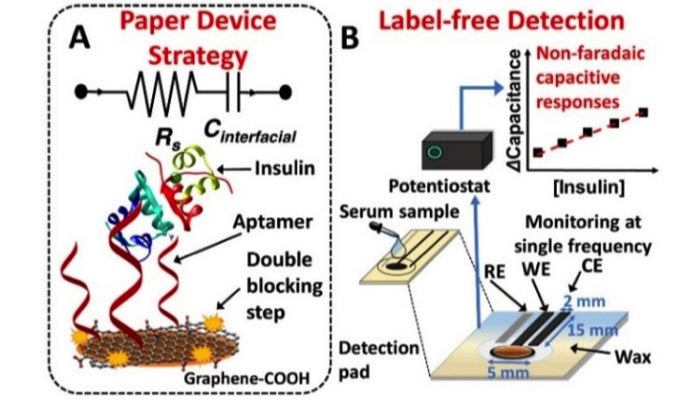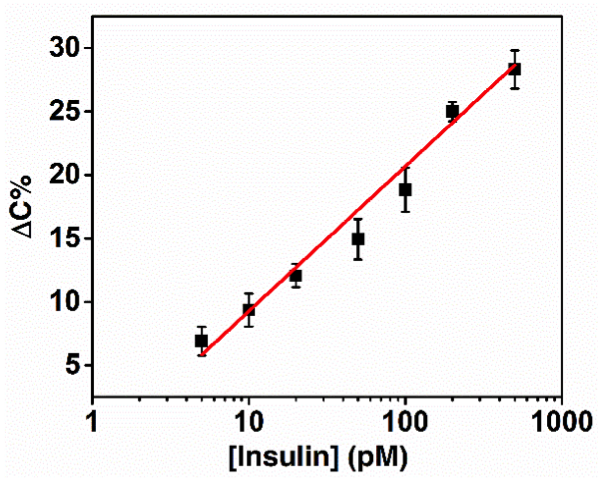SYSTEM AND METHOD OF ELECTROCHEMICAL PAPER ASSAY FOR ULTRA-LOW DETECTION OF MOLECULES (OSU Ref # 2019-029)
BACKGROUND
Rapidly growing diabetic disorders and associated health complications highlight the need for developing new user-friendly affordable biosensors that can improve the patient care. Glucose sensors and insulin monitoring devices that help with regulating normal glucose metabolism have gained considerable attention. New electrochemical detection platforms are cost-effective and amenable to miniaturization, and thus provide the possibility to fulfill point-of-care needs for diabetic patients.
SUMMARY OF TECHNOLOGY
OSU researchers developed a novel paper-based label-free electrochemical capacitance sensor to quantify clinically relevant ultra-low picomolar insulin levels in human serum samples. The new sensor exhibited a dynamic range of 5–500 pM and a limit of detection of 1.5 pM. The investigators demonstrated a proof-of-concept by detecting insulin in patient serum samples, and validating their novel approach with two independent peroxidase antibody label-based insulin assay methods (amperometric paper sensor and a commercial enzyme-linked immunosorbent assay). Briefly, the new sensor includes a graphene electrode substrate that enables high conductivity for an electrochemical transduction and provides aqueous dispersibility suitable for paper substrates. Following surface-blocking steps to avoid non-specific interactions, aptamers are covalently attached onto the graphene substrate modified with carboxyl groups (Figure 1). Aptamers fold into well-defined three-dimensional structures to bind specific target molecules and provide high specificity, affinity, stability, good biocompatibility, and low immunogenicity. At a measuring frequency range (<100 Hz), the new label-free sensor behaves as an ideal capacitor which allowed quantifying binding of insulin (in 10% serum samples) onto aptamers by measuring the capacitance changes in real-time.
|

|

|
|
Figure 1 (A) Schematic of the paper aptamer sensor and (B) electrode dimensions with the sensor mechanism for a label-free quantification of picomolar serum insulin concentrations
|
Figure 2 Semi-logarithmic plot showing the change of interfacial capacitance with the serum insulin concentration. This demonstrates the sensor’s ability in measuring low pM insulin concentrations.
|
STATE OF DEVELOPMENT
A proof of concept has been demonstrated and a provisional patent application filed.
LICENSING CONTACT: Please contact OSU’s Office of Technology Commercialization cowboyinnovations@okstate.edu for more information.